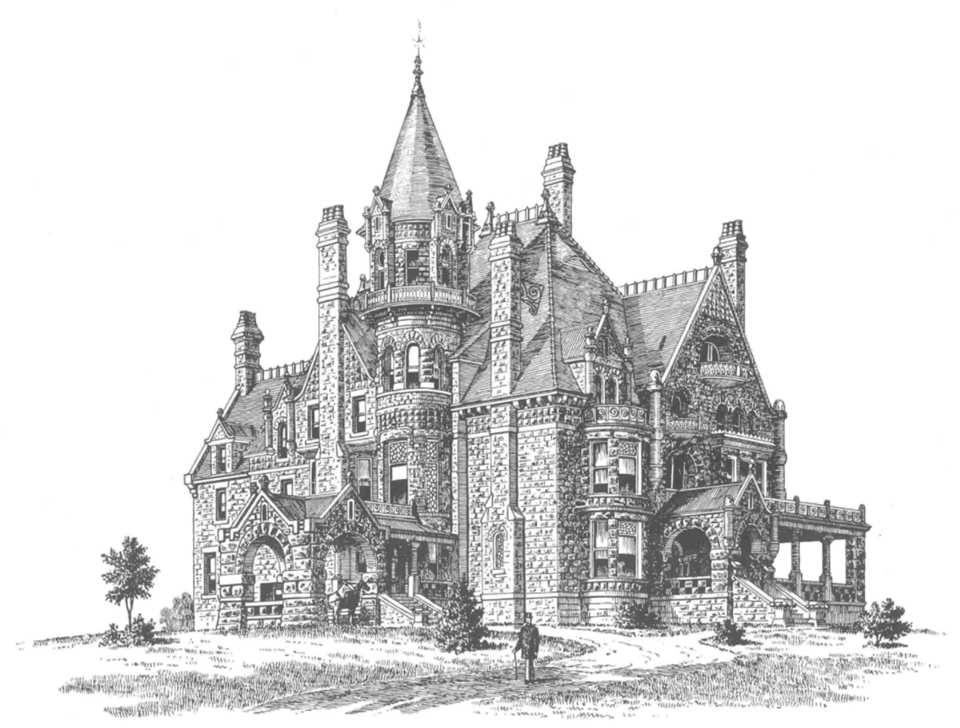Romanesque Architecture
In the 1880's and 90's architecture a Romanesque revival was underway that was influencing architects of the time. Leading the charge was American architect H.H. Richardson. What later became known as the “Richardsonian Romanesque” style can be seen throughout Craigdarroch Castle's construction. This very free, revival style incorporates 11th and 12th century southern French, Spanish and Italian Romanesque characteristics. It emphasizes clear, strong picturesque massing, round-headed “Romanesque” arches, often springing from clusters of short squat columns, recessed entrances, richly varied rustication, boldly blank stretches of walling contrasting with bands of windows, and cylindrical towers with conical caps embedded in the walling.
This style of building also imposed a great burden on the interior where close attention to detail was required in order to minimize the foreboding effects of the substantial construction. The Castle's interior oak panelling was fabricated by the A.H. Andrews Co. of Chicago. Their attention to detail gives the interior of Craigdarroch a warmth throughout and many of the rooms incorporate exotic woods such as walnut, jarra, rosewood, maple, holly, and oak.


One of North America's Finest Collections of Stained Glass
Art glass windows are a prominent characteristic of Craigdarroch's decorative scheme. The majority of these windows depict floral themes in flat and rippled clear glass and American opalescent glass.
Craigdarroch Castle has one of North America's finest collections of Victorian residential stained and leaded glass windows, which were produced by the Pacific Art Glass Company out of San Francisco.
Paintwork on Craigdarroch's windows was limited to foliage and flower petals with the exception of a figural panel in the Smoking Room said to depict Sir Walter Raleigh, and another in the Drawing Room based on Sir Frederic Leighton's exotic 1862 painting, Odalisque.
All of the windows contain complex glass cuts and are assembled in unusually thin and finely soldered lead joints. The profuse use of cut crystal jewels (as opposed to the pressed glass variety) illustrates the exceptional nature of the windows.
Mysterious Origins
Thirty two of the forty-seven original art glass windows are still in place. The studio responsible for them remains a mystery. An 1890 newspaper account states that the order for interior woodwork from A.H. Andrews & Co. of Chicago included “windows.”
The restoration of this National Historic Site is on-going and is it has taken more than 30 years to get it to its current condition. Craigdarroch Castle is a “must see” for any visitor to Victoria.


A Disappearing Act
Sometime after Joan Dunsmuir’'s death, several art windows disappeared from the Castle. The largest of these windows were removed from the dining room, the sitting room, as well as a bathroom. The Castle Society plans to install reproductions of all the missing stained and art glass windows at Craigdarroch, which will involve careful study of historic photographs.











